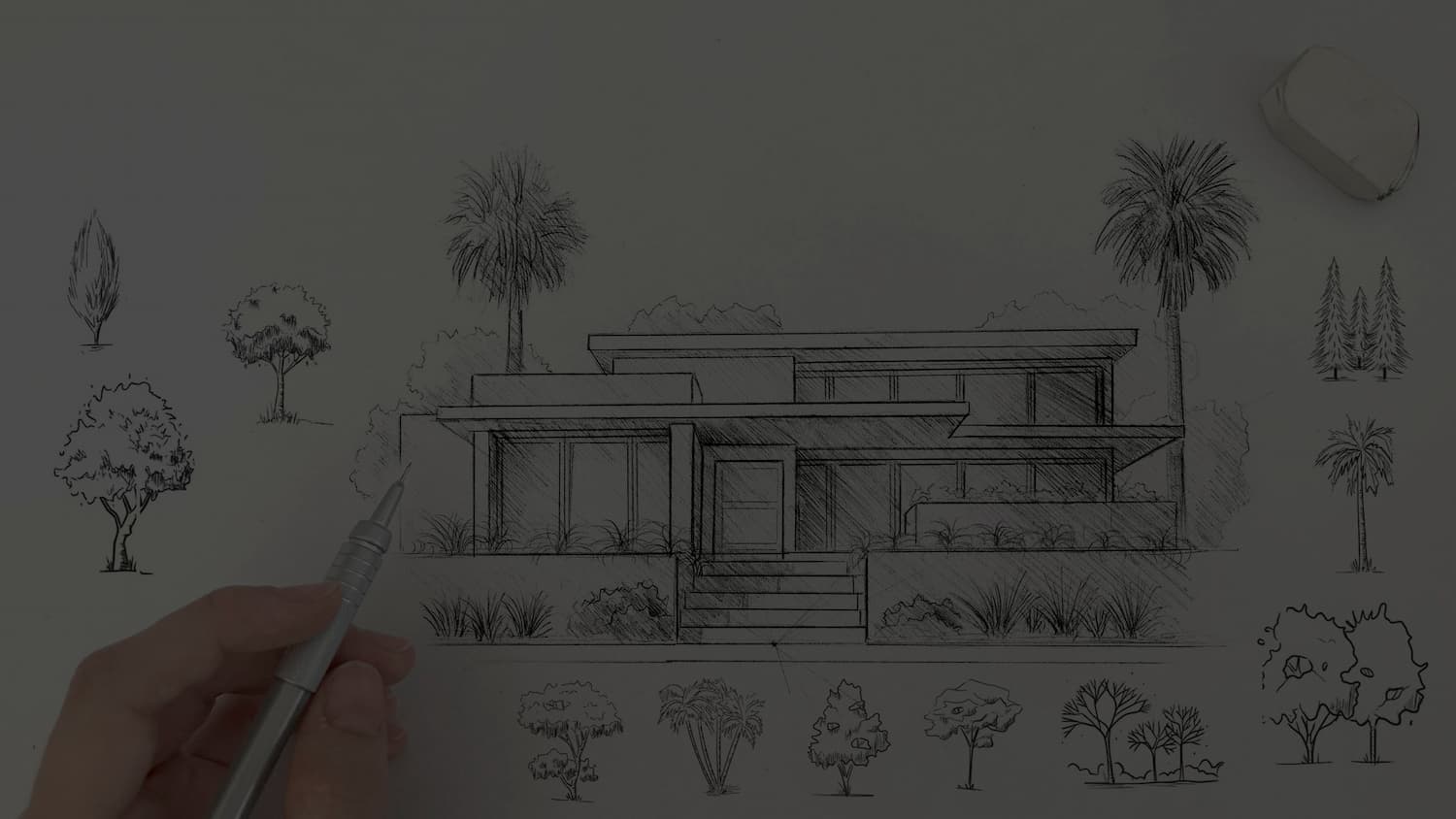Architectural sketches often come to life with the addition of the surroundings and especially trees. Trees not only enhance the aesthetic appeal of your designs but also provide context and scale, which makes it immediately more realistic! In this article, you’ll learn drawing trees on your architectural sketches and I’ll talk about some easy steps I follow to draw and place trees on my architectural sketches.
Download the FREE PDF Drawing Trees On Your Architectural Sketches by subscribing!
Drawing Trees On Your Architectural Sketches
Choosing the Right Trees
Consider the location and climate of your architectural subject. Different regions have distinct tree species, so choose trees that are appropriate for the setting.
Study different tree types and their characteristics. Pay attention to leaf shapes, bark textures, and overall tree shapes.
Are you working on an urban skyscraper or a rural retreat? Are you in a tropical or temperate climate? Make sure your tree selection complements the overall concept and landscape.

Perspective and Placement
Think about the perspective of your sketch and the position of the trees in relation to your building. Ensure that trees do not obstruct important architectural features but rather enhance the overall harmony of the design. Understanding the principles of perspective will help you accurately position your trees and show depth in your sketch, especially if you’re drawing a group of trees.
Ensure that the scale of your trees align with the rest of your architectural sketch.

Sketching the Basic Tree Structure
Start with a simple outline of the tree’s trunk and main branches. Use light, loose lines to create a basic framework.
Begin with the trunk and branches. Pay attention to the tree’s proportions and silhouette. Are you drawing a towering oak or a slender palm tree? Capture the essence of the tree’s form with confident lines. Don’t worry about intricate details at this stage; focus on getting the overall shape right.
Vary the thickness of your lines to mimic the thickness of branches, with thicker lines for the main branches and thinner lines for smaller ones.

Adding Foliage and Texture
Begin by sketching the tree’s foliage in a loose, organic manner. Trees are rarely perfectly symmetrical, so embrace irregular shapes and clusters of leaves. Use different shades of pencil or ink to suggest depth and volume within the foliage. Pay attention to the density and direction of the leaves. Trees often have more leaves at the outer edges and fewer toward the trunk.
Add texture to the trunk and branches by gently shading with short, vertical strokes to simulate bark.
Different tree species have varying foliage patterns, so reference images can be helpful. Use a combination of strokes, dots, or dashes to convey the texture of leaves or needles. Vary the density of foliage to create depth and dimension in your sketches. Don’t forget to include shadows under the tree to ground it in your architectural scene.

In Conclusion,
Adding trees to your architectural sketches can elevate them to a whole new level. Not only do trees provide aesthetic appeal, but they also convey a sense of harmony with the environment. Whether you’re an architect or an aspiring artist, integrating trees into your sketches can bring life and character to your architectural designs. So, grab your sketchbook, head outdoors, and let nature inspire your next architectural masterpiece.
Thank you for reading! If you still have a few minutes, you can check out my other posts or videos. Also, I love to hear from you, feel free to come say hi on Instagram!
Drawing Trees On Your Architectural Sketches


